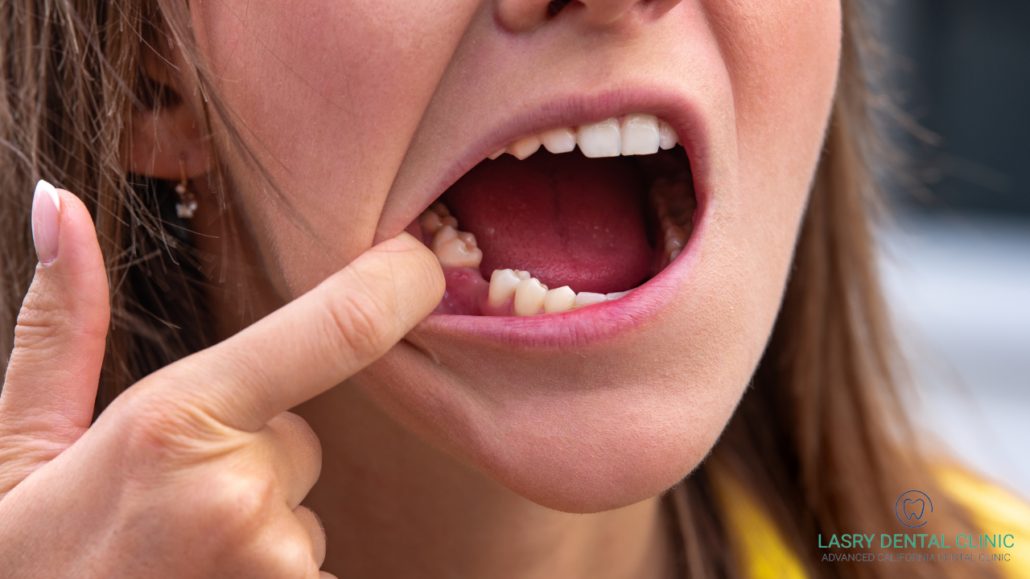Tooth Loss Age Chart [FREE]: How Many Teeth Should You Have at Your Age?
Are you curious about how many teeth you should have at your age? Look no further than our custom tooth loss age chart!
This chart is an excellent tool to help you understand your dental health, predict future tooth loss, and make informed decisions about your oral care.
What is a Tooth Loss Age Chart?
A tooth loss age chart visually represents the average number of teeth people have at various ages. It helps you determine if you have an average number of teeth for your period or if you need to take better care of your teeth. Tooth loss age charts can also predict future tooth loss, allowing you to make lifestyle changes to improve your dental health.
Here’s one we made for you!
How is This Chart Calculated?
Tooth loss age charts are calculated by looking at the average number of teeth people have at various ages.
For example, by age 6, most children have lost their baby teeth and have 20 permanent teeth.
By age 12, they should have 28 teeth; by adulthood, they should have a complete set of 32 teeth.
RELATED: HOW MUCH DOES IT COST TO GO TO THE DENTIST WITHOUT INSURANCE?
What is a Healthy Number of Teeth at My Age?
According to the tooth loss age chart, having a complete set of 32 teeth is considered healthy.
However, the chart also takes into account age-related tooth loss.
For example, by age 50, losing one or two teeth is common.
RELATED: HOW MUCH DOES A TEETH CLEANING COST?
Can Tooth Loss Age Chart Predict Future Tooth Loss?
Yes, tooth loss age charts can help predict future tooth loss.
Studies have shown that people who have lost teeth early in life are more likely to lose more teeth later in life. Additionally, if you smoke, have diabetes, or don’t like to brush your teeth on the regular, you’re more likely to experience tooth loss.
According to a study published by the National Center for Biotechnology Information (NCBI), the average number of teeth for adults over 65 years old is 20.7/32, indicating that tooth loss is prevalent in older adults.
RELATED: FOODS THAT ARE GOOD FOR YOUR TEETH
This Can Help Improve Your Oral Health!
To use the tooth loss age chart to improve your oral health, start by determining your tooth loss age chart score. If your score is below average for your age, take steps to improve your dental health.
That includes:
- Brushing and flossing properly
- Visiting your dentist twice a year
- Cutting back on things like smoking or excessive alcohol consumption.
In a study published by NCBI, researchers found that participants who visited their dentist regularly had fewer missing teeth than those who did not. Additionally, those who brushed their teeth at least twice daily had fewer missing teeth than those who brushed less frequently.
FAQs on Tooth Loss and Aging
The tooth loss age chart is a valuable tool to help you understand your dental health, predict future tooth loss, and take steps to improve your oral health.
By using the chart to monitor your dental health, you can make informed decisions about your oral care, visit your dentist regularly, and take steps to improve your dental health.
Why do we lose teeth as we age?
We lose teeth as we age due to various factors, including natural wear and tear, gum disease, and tooth decay. Our teeth are also affected by lifestyle factors such as diet, smoking, and alcohol consumption. Additionally, genetics may play a role in tooth loss, as some people may be more predisposed to dental problems than others.
What is the most common cause of tooth loss in the elderly?
Just like the rest of your body, your teeth lose their strength as wet older. The reason you may experience more tooth loss than normal as an older adult can be due to:
- Gum disease
- Tooth decay
- Poor oral hygiene
- Medical conditions such as diabetes and arthritis
- Medications that cause dry mouth or other dental problems
- Trauma or injury to the mouth or jaw
- Lack of access to dental care or preventive services
At what age do teeth fall out?
Teeth fall out at different ages depending on whether they are primary or permanent teeth.
- Primary teeth typically begin to fall out around age 6 and are usually completely gone by age 12.
- Permanent teeth start to come in around age 6 and continue until the late teens or early twenties.
- Wisdom teeth, the last set of molars, usually come in between ages 17-25 but may not come in at all or require removal due to impaction or other issues.







I getting older every years